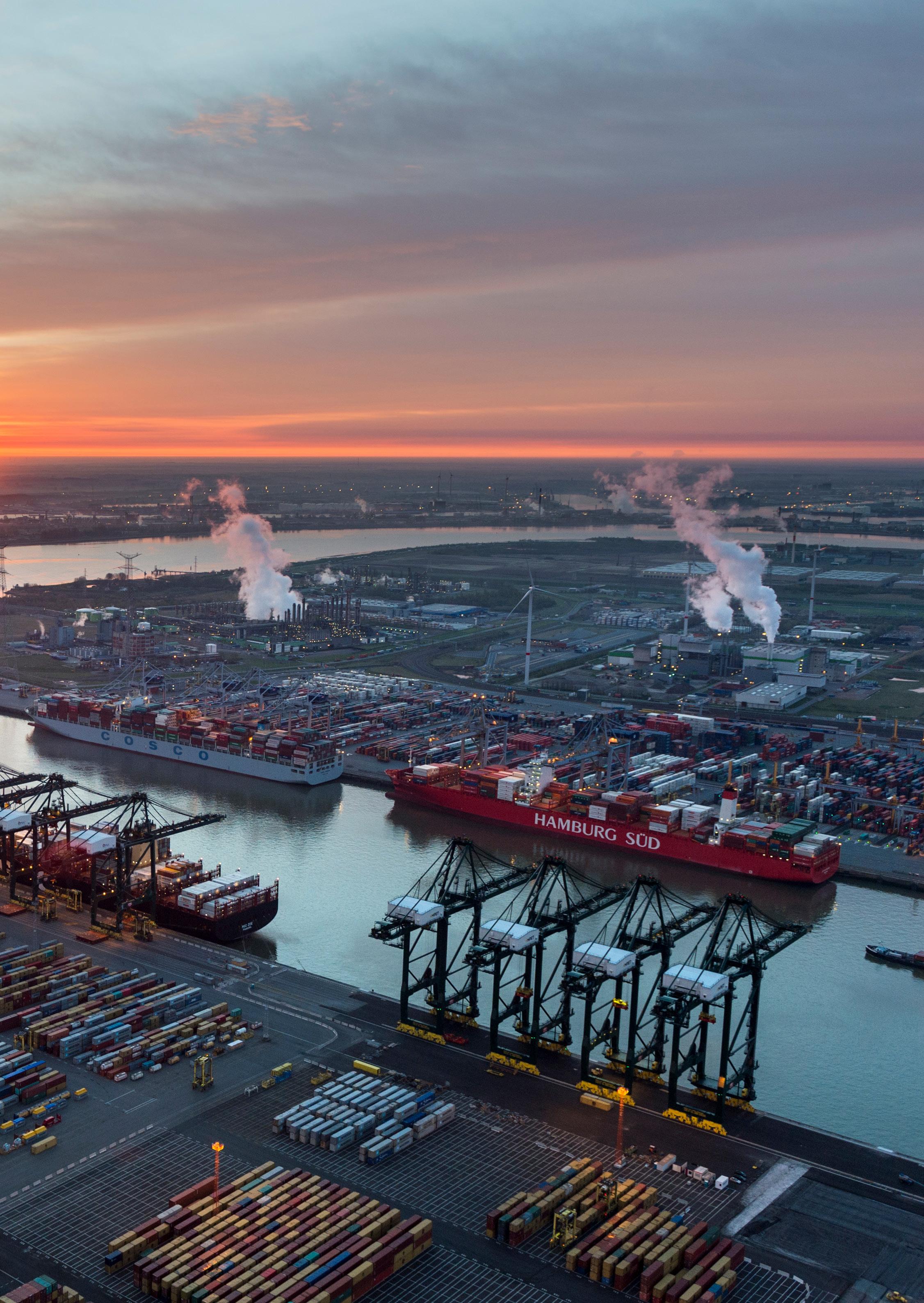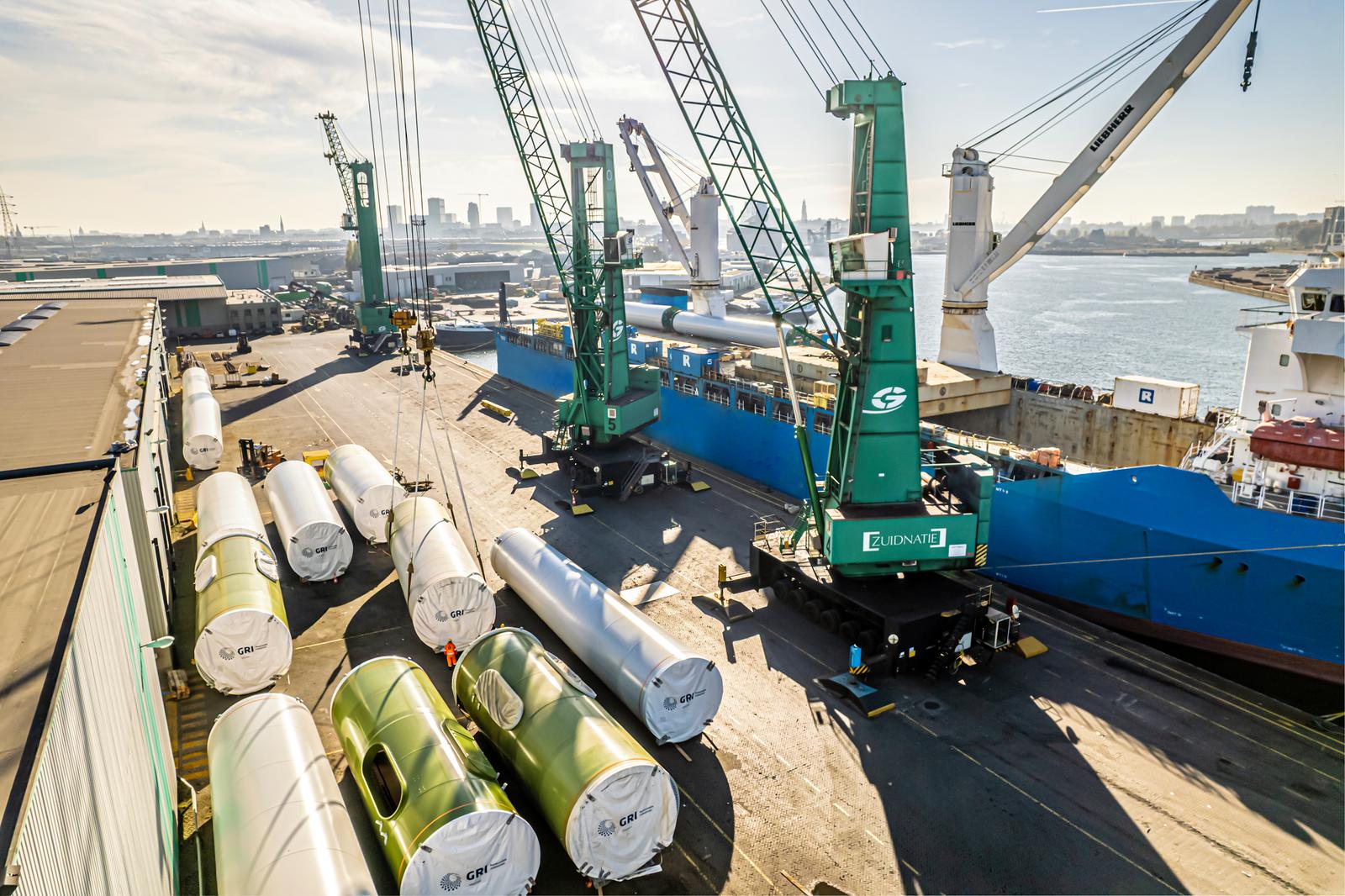THE PORT AUTHORITY MOTIVATING CHANGE
PORT OF ANTWERP-BRUGES


PORT OF ANTWERP PROJECT


DIRECTED BY: ROBBIE MORRIS ARTICLE
WRITTEN BY:
LAURA WATLING




DIRECTED BY: ROBBIE MORRIS ARTICLE
WRITTEN BY:
LAURA WATLINGAfter several years of preparation and negotiations, in April 2022 the independent ports of Antwerp and Zeebrugge merged, forming the largest export port in Europe.

The merger resulted in a unified added value of nearly €21 billion, accounting for 4.5% of Belgian GDP.
Tom Hautekiet, a member of the negotiation team as former CEO of Zeebrugge and now Chief Commercial Officer of the unified port explains:
“It was an incredibly exciting merger, and we could see how both ports would complement each other's abilities and capacities, as well as offer geographic advantages” explained Tom, highlighting the ports’ yin and yang-like capabilities.
Whilst Antwerp offers ten times the amount of container TEU to Zebrugge (with Antwerp at 15 million TEU versus Zeebrugge at 1.5 million TEU), Zeebrugge is known for being the biggest automotive import/export hub in the world, with Antwerp offering much fewer in comparison.
Meanwhile, Zeebrugge’s short sea operations accounted for 70% of its business with the remaining 30% focussed on deep sea connections in the Far East and Asia, more than the opposite was accounted for in Antwerp.
Over a year on from the merger, and the unification has enabled the port to accelerate its innovation, sealing itself as a crucial link to the international supply chain.
Now, the united port known as the Port of Antwerp-Bruges is making significant investments to develop capacity for its customers and improve its offering both in Northern Europe and the wider world.
Although already operating with a combined container capacity of 16.5 million TEU, the Port of Antwerp-Bruges is embarking on a significant investment to add a further 7 million TEU, mostly benefitting the port in Antwerp.

Phase One of this development is due to start in 2025, with plans to be fully operational by 2032.
“The project will see us add almost 50% more container capacity, which will enable our customers to improve their own business output,” said Tom.

Whilst the container capacity increase will mostly impact activities in Antwerp, at Zeebrugge expansion will be made at the automotive hub, which currently sees 3.5 million cars handled per year.
“As part of this development we’re planning to add a second lock, providing additional nautical access to the port to enable increased activity,” added Tom.
With Antwerp being the home of the second largest chemical cluster in the world, and Zeebrugge being responsible for importing 15% of Europe’s LNG, the Port of Antwerp-Bruges is perfectly situated to support the global green energy transition.
“To reach the targets outlined in the Paris Agreement, Europe will need to produce 10 million tonnes of hydrogen, and import


10 million tonnes by 2030. Ports will be crucial in facilitating this, and the Port of Antwerp-Bruges wants to be one of the pioneers,” said Tom.
In order to be at the forefront of the energy transition, the Port of AntwerpBruges is developing its road map to meet demand, with ambitions to become Europe's leading import hub for green hydrogen.
“This will include further developing the necessary infrastructure including bunkering, inland terminals and pipelines,” explained Tom.

Further spearheading, the Port of Antwerp-Bruges is taking steps to become the first port in the world to develop its own fleet of green tug boats, one which will use hydrogen and methanol.
ZUIDNATIE
your logistics partner in the Port of Antwerp-Bruges

www.zuidnatie.be

“Analysis of the port has shown that our biggest emitter of CO2 is our fleet of tug boats, so we intend to reduce the emission by 10% by 2025,” Tom shared, “it’s important that we “walk the walk””.
“The role of Port Authorities is changing. Ports are no longer only landlords and can play a valuable role in plugging gaps in the global supply chain services,” highlights Tom.
With that in mind, the Port of AntwerpBruges has also taken on a pivotal role in identifying bridging the gaps in the sector, resulting in a network of daughter companies.
This includes its subsidiary the Port of Antwerp-Bruges International, which utilises the port’s own experience and knowledge to strengthen ports and terminals worldwide, through consultancy, management solutions, investment projects and training.
AI is another area the Port of AntwerpBruges foresees opportunity, albeit with the requirement of industry-wide change.

“Not every business in the supply chain is uniform, and so the industry needs a revolution of information sharing to support improved efficiencies for customers,” explained Tom, “Through our daughter companies we are developing software platforms and inviting the wider port community to be involved”.
Whilst the energy transition and industry 4.0 poses challenges and opportunities, the Port of Antwerp-Bruges considers itself a motivator and facilitator of change, and Tom anticipates that other ports will soon follow its lead.
www.portofantwerpbruges.com


